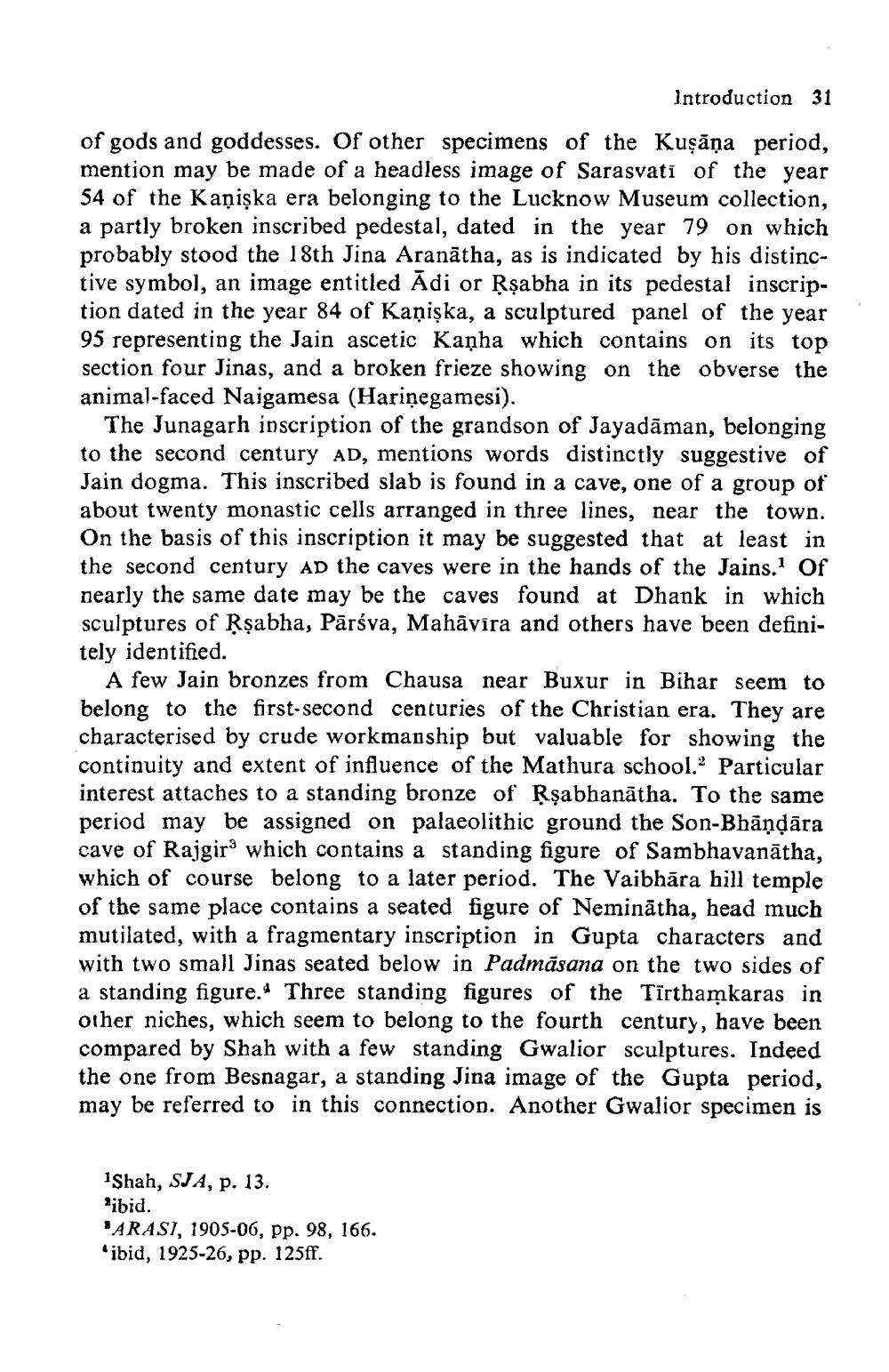________________
Introduction 31 of gods and goddesses. Of other specimens of the Kuşāņa period, mention may be made of a headless image of Sarasvati of the year 54 of the Kaņişka era belonging to the Lucknow Museum collection, a partly broken inscribed pedestal, dated in the year 79 on which probably stood the 18th Jina Aranātha, as is indicated by his distinctive symbol, an image entitled Ādi or Rşabha in its pedestal inscription dated in the year 84 of Kaņiska, a sculptured panel of the year 95 representing the Jain ascetic Kaṇha which contains on its top section four Jinas, and a broken frieze showing on the obverse the animal-faced Naigamesa (Hariņegamesi).
The Junagarh inscription of the grandson of Jayadāman, belonging to the second century AD, mentions words distinctly suggestive of Jain dogma. This inscribed slab is found in a cave, one of a group of
twenty monastic cells arranged in three lines, near the town. On the basis of this inscription it may be suggested that at least in the second century AD the caves were in the hands of the Jains. Of nearly the same date may be the caves found at Dhank in which sculptures of Rşabha, Pārsva, Mahāvīra and others have been definitely identified.
A few Jain bronzes from Chausa near Buxur in Bihar seem to belong to the first-second centuries of the Christian era. They are characterised by crude workmanship but valuable for showing the continuity and extent of influence of the Mathura school.” Particular interest attaches to a standing bronze of Rşabhanātha. To the same period may be assigned on palaeolithic ground the Son-Bhāņdāra cave of Rajgir' which contains a standing figure of Sambhavanātha, which of course belong to a later period. The Vaibhāra hill temple of the same place contains a seated figure of Neminātha, head much mutilated, with a fragmentary inscription in Gupta characters and with two small Jinas seated below in Padmāsana on the two sides of a standing figure. Three standing figures of the Tīrthamkaras in other niches, which seem to belong to the fourth century, have been compared by Shah with a few standing Gwalior sculptures. Indeed the one from Besnagar, a standing Jina image of the Gupta period, may be referred to in this connection. Another Gwalior specimen is
1Shah, SJA, P. 13. 'ibid. 'ARASI, 1905-06, pp. 98, 166. "ibid, 1925-26, pp. 125ff.




